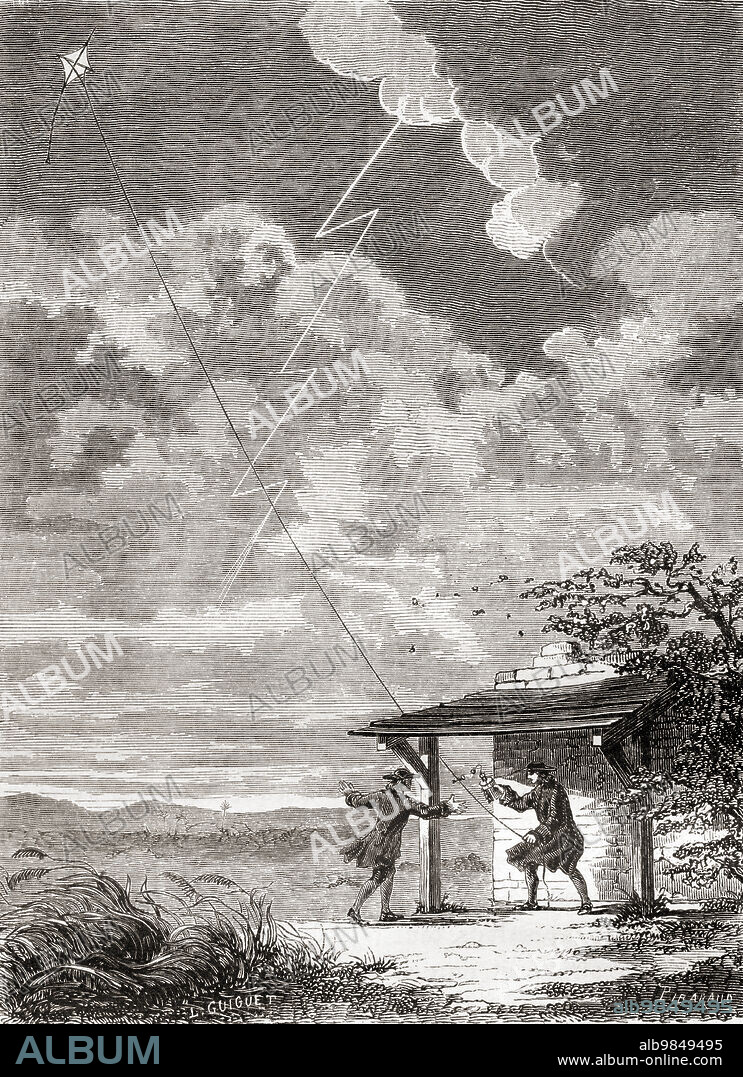alb9849495
Benjamin Franklin (1706-1790) and his son William, performing their famous experiment on 15 June 1752, flying a kite in a thunderstorm. A metal wire on the kite attracted a lightning strike and electricity flowed down the string to a key, charging a Leyden jar (capacitor) seen near Franklin's hand. This experiment proved that lightning was an electrical phenomenon, and supported Franklin's invention of lightning rods. From Les Merveilles de la Science, published 1870.

|
Add to another lightbox |
|
Add to another lightbox |



Buy this image.
Select the use:

Caption:
Benjamin Franklin (1706-1790) and his son William, performing their famous experiment on 15 June 1752, flying a kite in a thunderstorm. A metal wire on the kite attracted a lightning strike and electricity flowed down the string to a key, charging a Leyden jar (capacitor) seen near Franklin's hand. This experiment proved that lightning was an electrical phenomenon, and supported Franklin's invention of lightning rods. From Les Merveilles de la Science, published 1870.
Credit:
Album / Universal Images Group / Ken Welsh
Releases:
Image size:
3602 x 4963 px | 51.1 MB
Print size:
30.5 x 42.0 cm | 12.0 x 16.5 in (300 dpi)


 Pinterest
Pinterest Twitter
Twitter Facebook
Facebook Copy link
Copy link Email
Email
